Ansó, 30 October
by Isabel Isherwood - 22:17 on 30 October 2016
We have had a few wobbly days recently, of which I’ll try to write more in another post. Rowan in particular has had quite a low period.
This is a holiday weekend in Spain to celebrate All Soul’s Day, so we have four days off. We’d originally intended to do a multi-day walk in the mountains before the snow comes and they become inaccessible (to us, at least) – but we (fortunately!) realised that what the children really need right now is not hard walking and cold camping but something relaxing, fun and easy, to make up for the challenges they’re coping with every day….
We are slowly realising what a huge and diverse country this is, and how very little we really know about it. So when we started trying to think of something to do for the girls we had no idea what our options were. Fortunately our decision was made for us, by Rowan coming home from school glowing with excitement on Monday - one of her classmates had been to stay at the Monasterio de Piedra, and it was ‘the most beautiful place in the world!’. The teacher had shown photographs to the class and Rowan was quite blown away. Amusingly it turns out that this was all a mistake – the girl in question went to stay at a B&B called la Casa de Piedra (the Stone House), and had been too shy to tell the teacher that the photos were not of the place where she’d been…..!
So we went to the real Monasterio de Piedra. It is a 12th-century monastery and is quite beautiful but not particularly out of the ordinary. What makes it special is the surrounding park. The monastery is built on the edge of a spectacular limestone gorge through which the Río Piedra flows, and the river has carved out an extraordinary landscape of caves and cliffs, all completely hidden from view below the level of the surrounding landscape. This part of southern Aragón is arid and quite barren, with scattered vines and olive groves amidst wide expanses of rock and spiny shrubs, but the gorge is lush and almost tropical. In the deep shade cast by high cliffs, and fed by the abundant supply of water, a high forest has developed, draped with ivy and clematis, mosses and ferns. The air is moist and cool, and the sound of water is everywhere.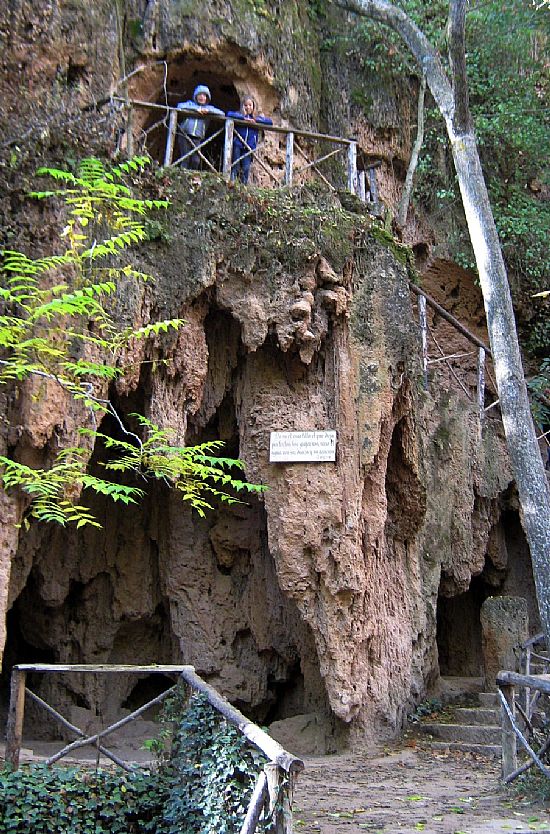
The monastery was abandoned in 1840 and was bought by a Catalonian merchant, whose son clearly had an eye for landscape gardening. He planted trees, built walkways, and undertook judicious redirecting of sections of the river to create what is now a fabulously picturesque forest-and-water garden.
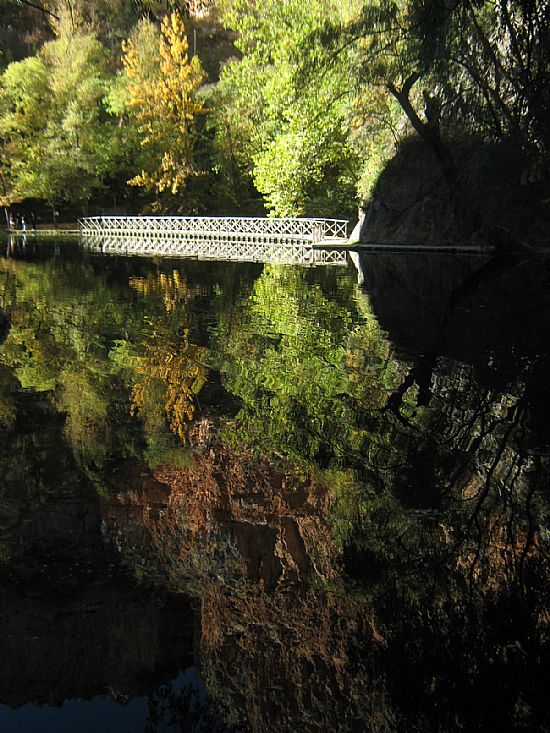
Warned that it would be busy on a holiday weekend, we were there as soon as it opened, and for the first two hours there we saw very few other people. It is a truly magical place of huge waterfalls, tiered cascades, paths that wind their way up and down cliff-faces, natural caves, manmade tunnels, delicate wooden bridges and mirror-calm lakes.

The highlight for us was the Cola del Caballo (horse’s tail) waterfall - an unbroken fall of over 50 m into a long narrow lake cradled between the canyon walls. The approach to the waterfall is from the top, where you have a brief glimpse down into the lake below before entering a tunnel.

The tunnel descends in flights of narrow winding stairs cut inside the cliff, from which occasional window slits and balconies give views out onto the waterfall.
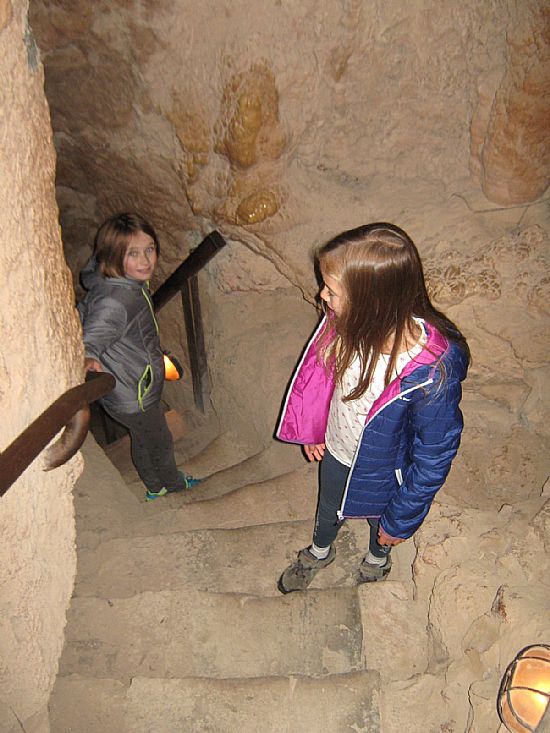
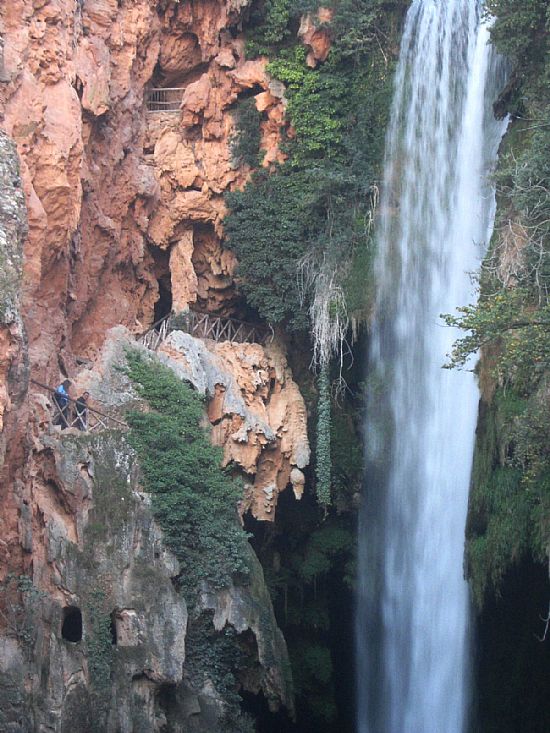
The stairs descend the entire height of the cliff and emerge – behind the curtain of the waterfall – in a magnificent limestone cave with stalagmites and stalactites, and feathery maidenhair ferns around the entrance where enough light filters in.

It is a truly fairy-tale place. The girls were entranced, and to be quite honest, so were Jake and I.
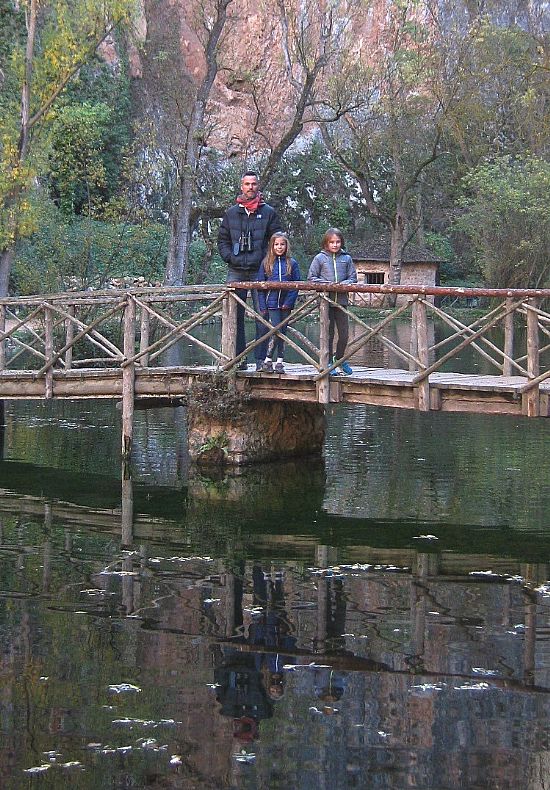
In the afternoon, as the busloads of visitors queued to get in, and the birdsong and sounds of the water were drowned out by thousands of voices, we slipped away from that magical oasis and drove over dry barren steppes to the Lago de Gallocanta, the largest natural lake in Spain which, even in the winter when it is at its fullest, is never much over a couple of metres deep. At this time of year, after one of the driest autumns in years, it was reduced to less than a quarter of its usual extent. Standing as it does in one of the driest areas of northern Spain, it is a magnet for wildlife, and at this time of the year flocks of migrating cranes start to arrive from the north.

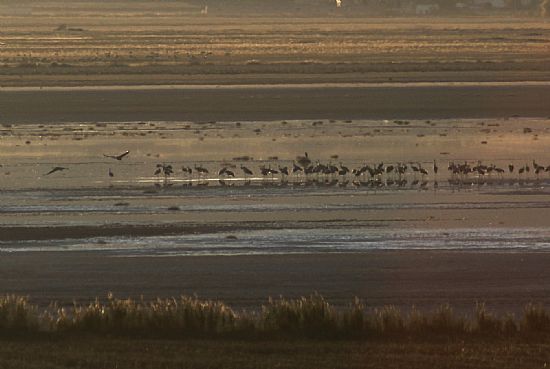
At times the lake can hold as many as 10,000 cranes, but we were a bit early for such big numbers, and the lack of water seems to be preventing those that have arrived so far from hanging around long. Nevertheless, there must have been in the region of 1000 cranes in scattered groups around the lake and the surrounding farmland, and as the sun sank slowly towards the horizon throwing long shadows and golden light over the blonde reeds and ploughed fields and picking out the red, grey, black and white of the cranes’ plumage, it all looked extraordinarily idyllic.
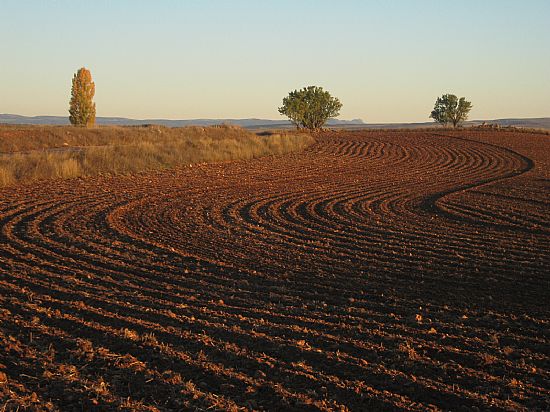
Add your comment